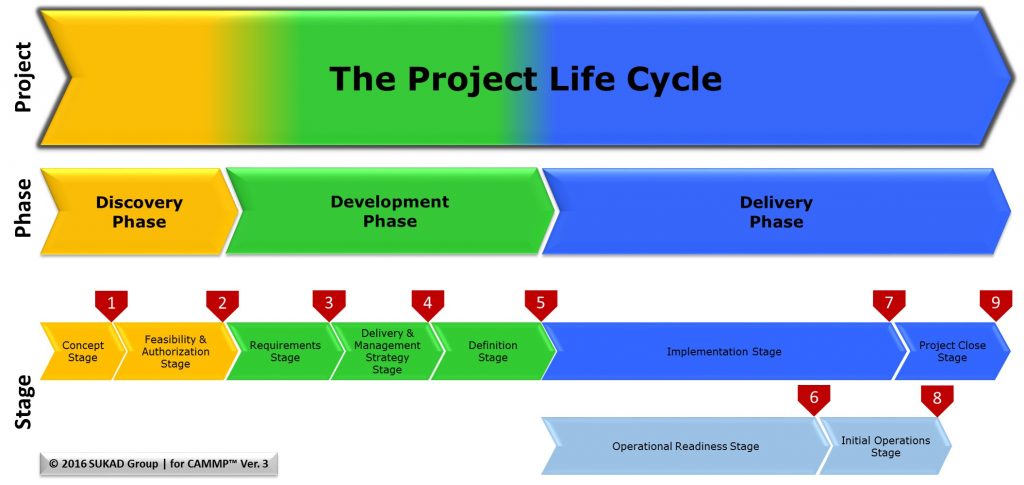Most of us who work on projects and project management understand that a project has a project life cycle; some like to call project life span. The project life cycle indicates starting and ending points. Further, the PMBOK(r) Guide defines the project as “temporary,” implying the beginning and end. However, do we know or agree on when are a project’s starting and ending points?
It Depends
We often joke that most answers to project management questions start with “it depends.” Why it depends? Because it is likely that the question is highly situational and requires the proper context. Therefore, before discussing a project beginning and end or a project life cycle, we must understand what a project is. For example, for a software development company, “development” is a project. Whereas for a project owner, “development” is only a stage along the project life cycle.
The Project Life Cycle – Beginning Point
The Project Management Institute (PMI)
In addition to the different perspectives between developer and project owner, we have different “schools.” For example, in PMI, the project begins with a charter after the pre-project work. In the image below, that will be after stage gate 2.
SUKAD CAMMP™ Model

On the other hand, in the SUKAD CAMMP Model, the beginning is “inception.” Inception indicates as soon as an idea is generated from the strategic plan or a team member. Therefore, in CAMMP, we have the Discovery Phase, roughly equivalent to the pre-project work in the PMBOK Guide. Therefore, the project starts in the concept stage. The concept stage is about clarifying the idea, the output, the justification, i.e., the business case.
Other Perspectives
For a service provider (Developer, Contractor), the start of a project would likely be a Request for Proposal. Finally, the project starting point is a function of organization type, preferences, and other variables.
So, now that we defined the starting point, where is the endpoint? That is next!
The Project Life Cycle – Ending Point
When is the end of the project?
Some define the end at handover, others say at acceptance, and other views on “project closure.”
Here is the SUKAD Way viewpoint
First, we want to remind everyone that per CAMMP, we have a Project Life Cycle, as shown in the image above. So, the end will definitely be after handover and after acceptance.
Please note, in the image above, handover is at stage gate 6 and acceptance is at stage gate 8.
The end of the project life cycle
From a project management practical perspective, the end of the project life cycle is the close stage since it would not make sense to keep the project manager or team members on the project beyond that point.
The end of the project
However, from an organizational perspective and the SUKAD Way™ Project Management Framework, the project end is later, much later. The project ends when the organization, possibly through the Project Management Unit (PMU), performs the final success assessment. This final assessment could be months or years later.
Consequently, when the project team closes a project (end of life cycle), they transfer the data to PMU for future evaluations. This is why we like to say Leading Projects, Concept to Success!
A Project Management Unit (PMU) could be a Project Management Office (PMO) or a Project Management Department!
How to manage projects, an Uruk Platform perspective!
The following video is relevant to the project life cycle question, and we share it here. It views projects per the CAMMP Model shown above, concept to closure to success!
Do you want to be part of changing the future of project management? Start by investing in the Uruk Platform, https://wefunder.com/sukadcorp.
The post Do we know when are a project’s starting and ending points? appeared first on Applied Project Management.